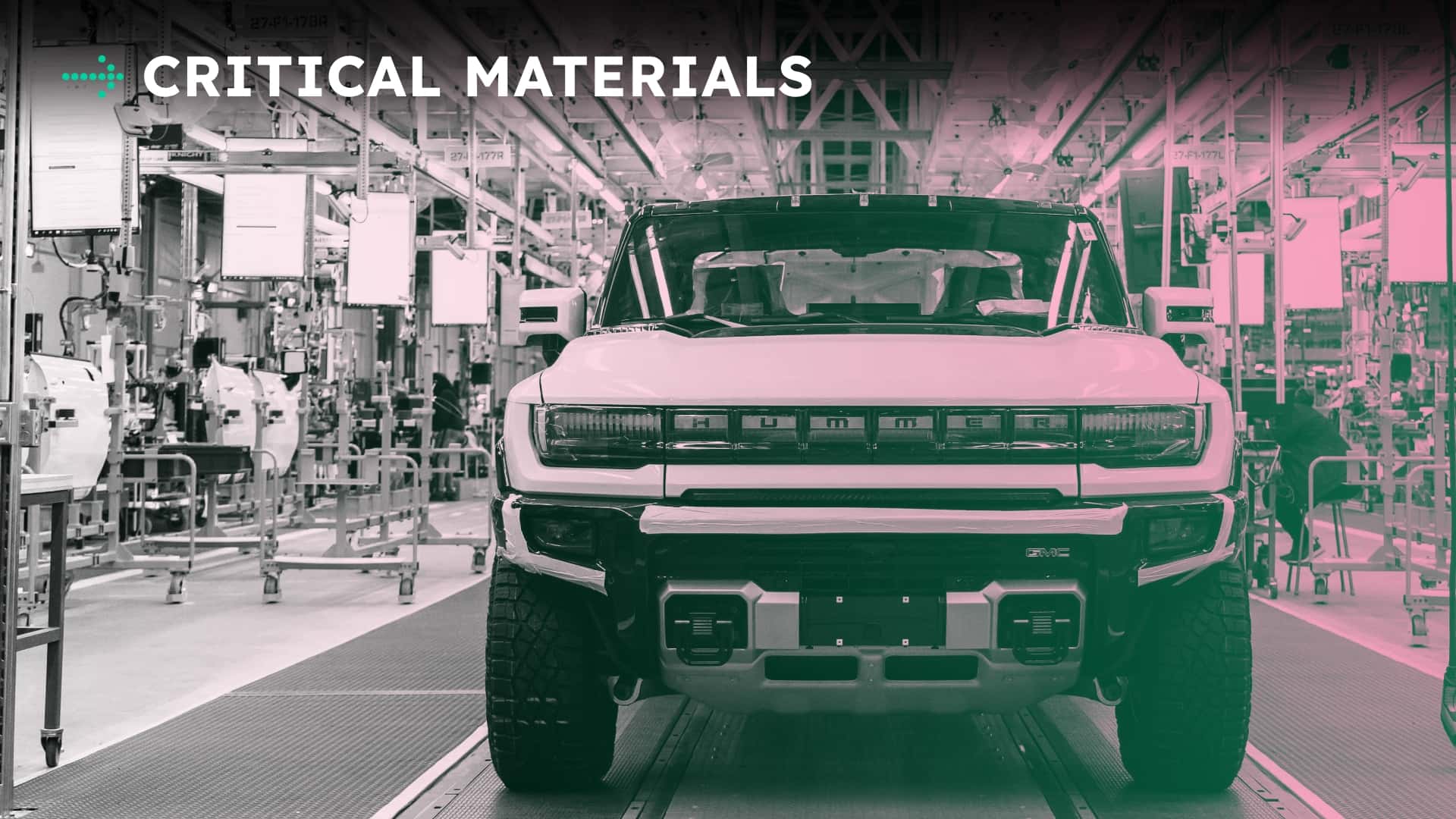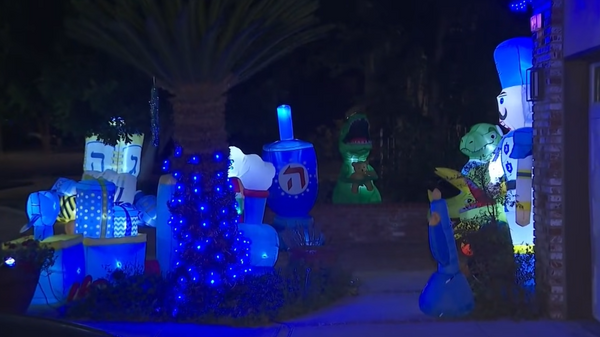
Last quarter was a massive one for electric vehicles in America. Sales skyrocketed as buyers made sure not to miss out on the last opportunity to buy an electric car at the best discount they'll see in a very long time with the EV tax credit fading. Now, automakers are predicting a crash.
Many brands trimmed down production prior to the end of the quarter as a precaution. Apparently, that wasn't enough, because General Motors is taking it a step further and laying off thousands of EV assemblers and battery workers. Rivian, too, is taking a similar hit right now. But there are reasons to view this as a speed bump as well.
THE CRITICAL MATERIALS NEWSLETTER IS ALMOST HERE
The EV and transportation news roundup you know and love will hit your inbox each morning at 8 a.m. EST
Welcome back to Critical Materials, your daily roundup for all things electric and tech in the automotive space. Also on deck: South Korea strikes a tariff deal, and Stellantis picks up some big-deal partners to join the robotaxi raxce. Let's jump in.
30%: GM To Layoff 3,300 EV And Battery Workers As EV Demand Cools

Production will soon idle at GM's Factory Zero plant in Detroit. The pause will be temporary, lasting about a month. But when production starts back up, it will be doing so without one of its shifts.
Factory Zero previously ran three shifts where workers assembled the big electric trucks: the GMC Hummer EV, Chevy Silverado EV, GMC Sierra EV and Cadillac Escalade IQ. Needless to say, with the loss of the EV tax credit and a major amount of its demand artificially moved forward, GM expects to sell fewer EVs for a while. And by early next year, it will have just a single shift building what previously ran around the clock.
Likewise, GM is also reportedly temporarily laying off workers at several of its Ultium battery plants to match—for up to six months. The total projected job loss is around 3,300 workers. This news came days after Rivian too announced it would lay off nearly 5% of its workforce.
More on GM from Reuters:
General Motors said on Wednesday it will cut U.S. electric vehicle and battery production and 1,200 factory jobs at its EV plant in Detroit, as the automaker responds to a significant slowdown in demand for its battery cars.
The Detroit automaker said it will halt battery cell production at its two U.S. joint-venture battery plants - in Tennessee and Ohio - in January for about six months. It added it will temporarily lay off about 1,550 workers at the factories.
In addition, at the Ohio plant, GM said it will lay off 550 workers indefinitely. GM operates the Ohio plant jointly with South Korea's LG Energy Solution
GM said in a statement that it was “adjusting production in response to recent changes in customer plant demand." Or, as anybody with eyes can tell, the post-EV-tax-credit-slowdown seems to have begun. A second statement from the automaker said that it plans to upgrade is Ultium facilities during the downtime and will "continue to evaluate and adapt production plans based on evolving market needs.”
On Monday, GM also said that it was closing an IT center in Georgia that affected 900 workers. Another 200 salaried jobs are also to be cut at another tech center in Detroit, plus another 120 who work at facilities that supply components to Factory Zero. The brand posted a whopping $1.6 billion in charges related to EV manufacturing in October and expects to amass more throughout Q4.
But there are reasons not to see this as a permanent setback, EV data expert and frequent InsideEVs commentator Loren McDonald said. About "1,500 (or nearly half) of the workers are expected to be brought back in mid-2026. Reading the tea leaves, GM rightly anticipates lower EV sales in Q4 2025, Q1 2026, and possibly Q2 2026—but that after that, and people forget about the loss of the tax credit, sales will get back on pace. Especially because many new compelling EV models will become available in 2026."
60%: America, South Korea Cut A Deal On Tariffs

After months of a tariff standoffs, South Korea and the U.S. have finally hammered out a trade deal that puts its auto market on a level playing field with Japan. As part of the agreement, South Korea will have its tariffs on cars and auto parts imported into the U.S. by nearly half, so as long as it agrees to inject a significant amount of cash into the U.S. over the next two decades.
That sets the South Korean tariff rate at 15%, down from the 25% it's been these past few months. Automotive News reports on the details:
President Donald Trump and South Korean officials announced the leaders had finalized details of a fraught trade deal on how to structure a $350 billion investment in the U.S. in return for cuts to import duties on South Korean goods.
Central to the agreement was to set tariffs on Korean auto and auto parts at 15 percent, down from current 25 percent, placing them on par with Japanese competitors.
Trump had originally pushed for an upfront investment of $350 billion. South Korean President Lee Jae Myung said that demand would "seriously destabilize" the country's currency. Instead, the investment will be structured in a way where South Korea agrees to spend no more than $20 billion per year so as not to upset its own financial markets. It will also include a $150 billion injection into America's shipbuilding.
This is a major deal, considering that North America represents a significant portion of sales for automakers like Hyundai. It also benefits battery makers like LG Energy Solution and SK. Even General Motors will see green, as it imports a ton of EV components from Korea.
Now that the deadlock is over, the game of geopolitical EV chess can continue to be played. By cutting tariffs and locking in long-term investments, South Korea has secured friendlier footing in the U.S. for its automakers and suppliers. That's more important than ever now that Canada is rumored to be cozying up to the thought of Chinese EVs.
90%: Stellantis, Nvidia, Uber, Foxconn Team Up On Robotaxis

Meanwhile, Lucid wasn't the only automaker making big robotaxi news with chip giant Nvidia this week. Stellantis, largely regarded as behind the curve on EV technology as well as advanced autonomy, inked a deal with that company—as well as Uber and iPhone maker Foxconn—for robotaxi development and deployment. Stellantis will make the cars, Nvidia and Foxconn will handle the autonomy hardware and software, and Uber's network will deploy them. Here's The Verge with more:
Stellantis says its vehicles' platforms are “AV-Ready,” including its K0 Medium Size Van and STLA Small. These vehicles are designed for “maximum flexibility” and can be built to accommodate multiple passengers.
The autonomous driving technology will be powered by Nvidia’s Drive AGX Hyperion 10 architecture, which includes the chipmaker’s DriveOS software. What exactly Foxconn is bringing to the table is a little unclear; the press release only says the Taiwanese tech company will “collaborate with Stellantis on hardware and systems integration.” Foxconn, which famously manufactures the iPhone for Apple, has declared ambitious plans to sell vehicles globally, but has a bad habit of partnering with car companies that eventually go out of business.
Stellantis says “start of production” for these new vehicles is slated for 2028. Uber will deploy the robotaxis in multiple markets globally, starting first in the US with 5,000 vehicles. No other details have been provided about specific cities or deadlines.
Automaker-owned robotaxi operations have a decidedly mixed track record. GM folded its cars on its Cruise robotaxi division last year, and while Tesla's Robotaxi service is hailed as the future of the company, its timeline has become much more conservative as of late. Thus, Stellantis is being smart here. By acting purely being a vehicle supplier and staying in its lane while its partners handle the tech, it could have a better foothold into the next big thing: autonomous vehicles.
100%: What's Your Favorite EV From The Japan Mobility Show?

This year's Japan Mobility Show had some pretty sweet EV concepts shown off. There's the new Subaru Performance-E STI, a wild six-wheeled Lexus minivan and Honda's adorable Super-One Prototype to name just a few.
It was pretty refreshing to see automakers put some elbow grease into EVs, especially as government subsidies fade out and EV adoption is expected to cool down for a while. Sure, concepts are never really quick to market (if they make it there at all)—but just seeing the R&D effort put into battery-powered cars still is nice to see.
So what was your favorite EV shown off at the show this year? Let me know in the comments.







